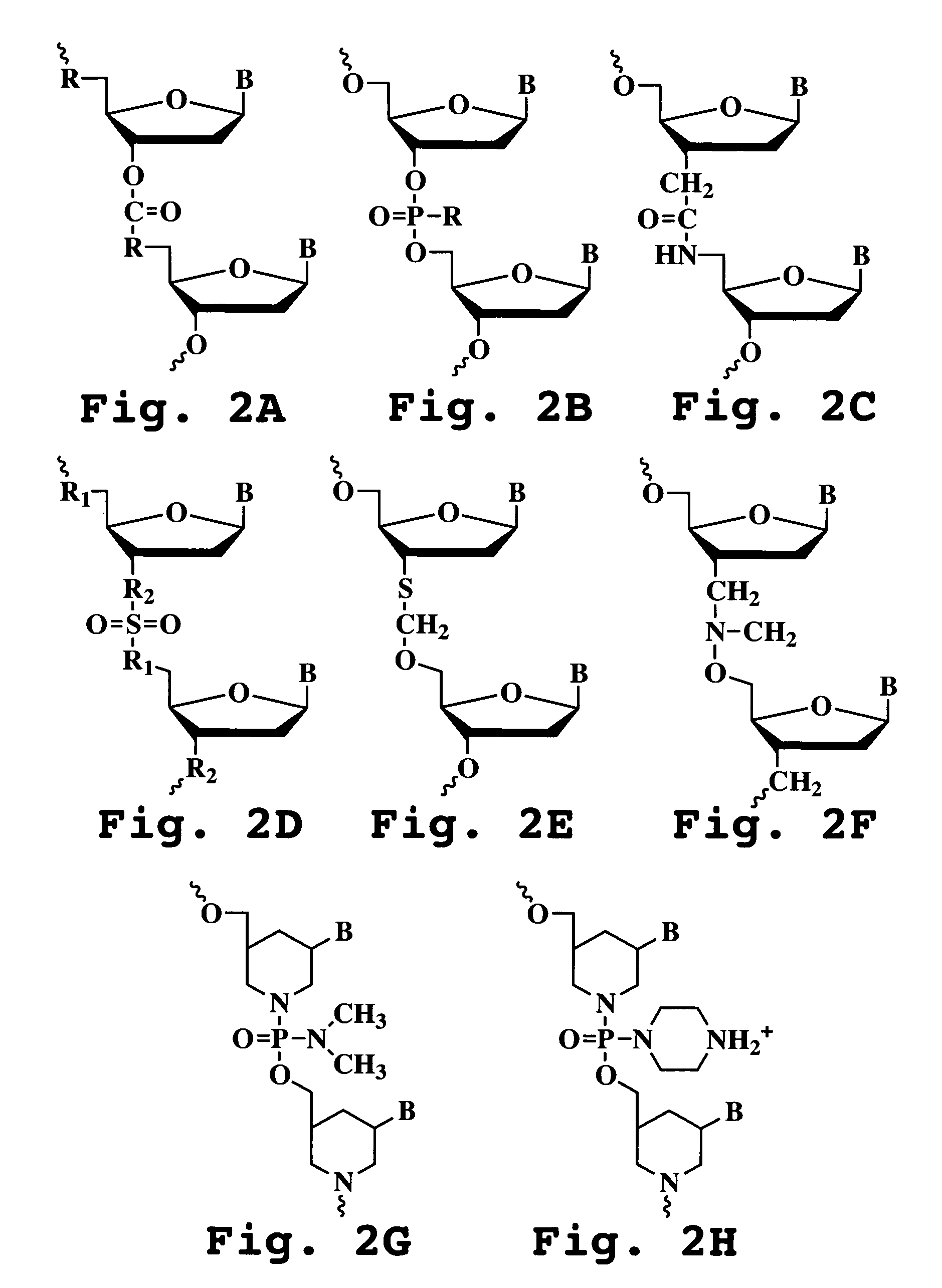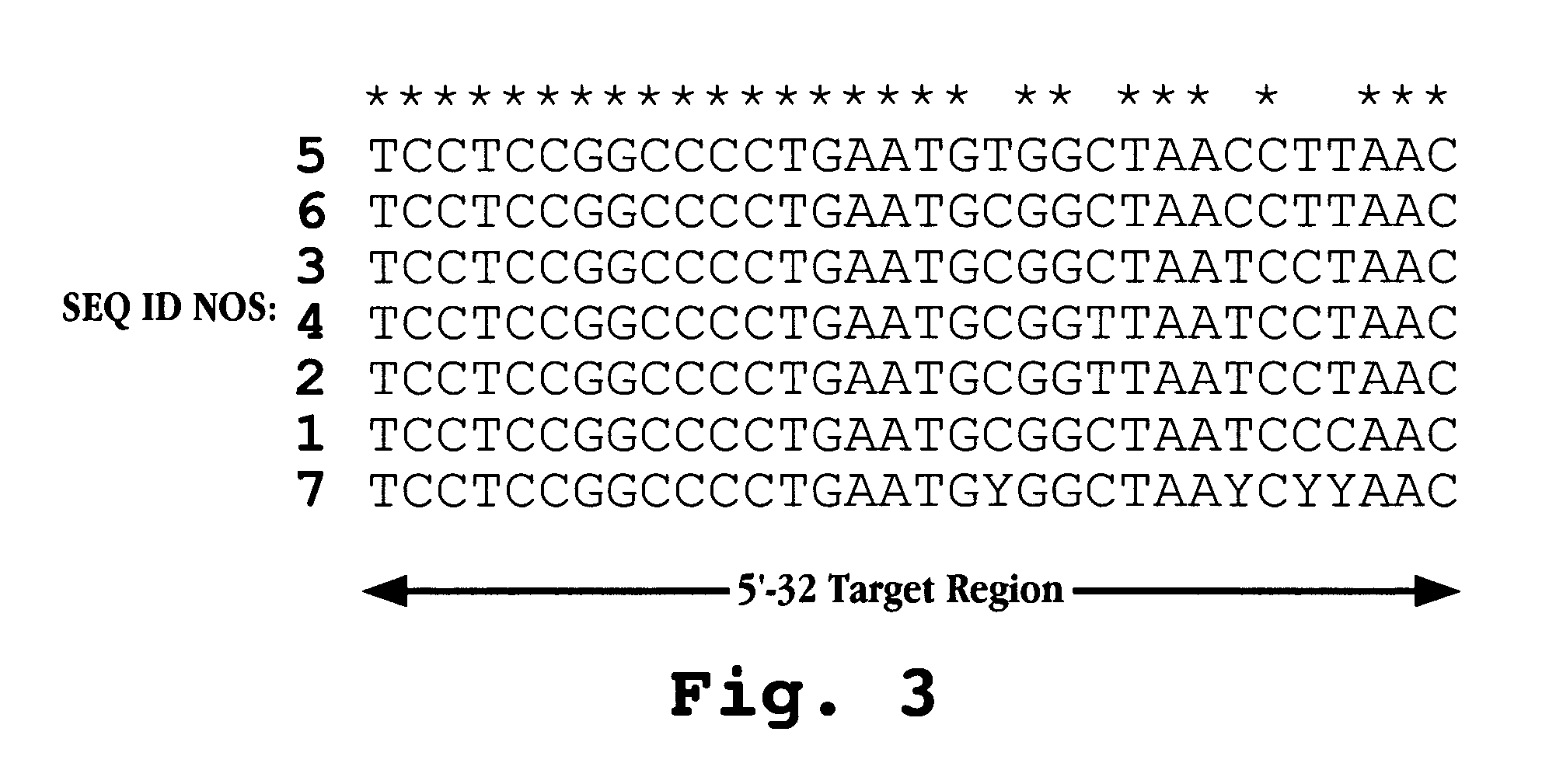Method for treating enterovirus or rhinovirus infection using antisense antiviral compounds
a technology of enterovirus and rhinovirus, applied in the field of antisense oligonucleotide compounds, can solve the problems of inability to demonstrate sufficient prophylactic effects, unstable vaccine, and inability to use existing drugs which are used against the viruses described above, and achieve the effect of inhibiting the infection of the host cell
- Summary
- Abstract
- Description
- Claims
- Application Information
AI Technical Summary
Benefits of technology
Problems solved by technology
Method used
Image
Examples
example 1
Inhibition of Picornavirus Virus RNA Translation with Phosphorodiamidate Morpholino Oligomers
[0161]Phosphorodiamidate Morpholino Oligomers (PMOs), designed to hybridize to a specific region of the poliovirus internal ribosome entry site (IRES) region of poliovirus, as described above, are evaluated for their ability to inhibit translation in a rabbit reticulcyte lysate (RRL) assay. A dual reporter expression plasmid construct is derived as follows. A 507 nucleotide fragment of the 5′ untranslated region of the poliovirus genome (ncts 124 to 630, GenBank No. V01149) is synthesized (BlueHeron, Inc) and inserted into the intercistronic region of a dual luciferase reporter plasmid described previously (Johannes, Carter et al. 1999; Wilson, Powell et al. 2000; Brasey, Lopez-Lastra et al. 2003) and named herein as pR&Fluc. The resulting plasmid, pR&Fluc-PolioIRES is shown schematically in FIG. 4. For transcription in vitro, the dicistronic luciferase pR&Fluc-PolioIRES construct is digeste...
example 2
Inhibition of Coxsackievirus B3 (CVB3) in Tissue Culture with PMOs that Target the 5′ UTR of CVB3
[0163]The antiviral activity of CVB3-specific PMOs is determined by measuring viral protein expression in PMO-treated, CVB3-infected cells. The test is performed on either cardiomyocytes (HL-1 cells) or HeLa cells. Cell monolayers (6-well plates) are seeded 16 to 20 hours prior to treatment with PMO or infection with virus. Serum-containing medium is replaced with serum-free medium during PMO treatment and infection. The infection is allowed to proceed for either 7 h or 24 h at 37° C. prior to collection of cells and the preparation of cell lysates for immunoblot detection of viral capsid protein by Western blot (i.e. immunoblot) assay using a polyclonal antibody to the CVB3 VP1 gene. Antisera against beta-actin is included as a loading control.
[0164]In one set of experiments, 6×105 HL-1 cells (cardiomyocytes) are seeded in 6-well plates for 16-20 h. Culture medium is then replaced with ...
example 3
Inhibition of CVB3-Induced Cytopathic Effects in Tissue Culture with PMOs that Target the 5′ UTR of CVB3
[0167]Another measure of antiviral activity is to observe a reduction in cytopathic effects (CPE) in tissue culture experiments. Three P007-conjugated PMO are selected for these analyses, PV444, PV449, and PV454 (SEQ ID NOS:11, 12, and 13, respectively) are used to treat both HL-1 cells (cardiomyocytes) and HeLa cells under the same conditions described in Example 2 above. Four hours post-treatment with PMO, cells are infected with CVB3 at an MOI of ten. Photomicrographs are taken 24 hours post-infection for HeLa cells.
PUM
| Property | Measurement | Unit |
|---|---|---|
| Tm | aaaaa | aaaaa |
| temperatures | aaaaa | aaaaa |
| Tm | aaaaa | aaaaa |
Abstract
Description
Claims
Application Information
 Login to View More
Login to View More - R&D
- Intellectual Property
- Life Sciences
- Materials
- Tech Scout
- Unparalleled Data Quality
- Higher Quality Content
- 60% Fewer Hallucinations
Browse by: Latest US Patents, China's latest patents, Technical Efficacy Thesaurus, Application Domain, Technology Topic, Popular Technical Reports.
© 2025 PatSnap. All rights reserved.Legal|Privacy policy|Modern Slavery Act Transparency Statement|Sitemap|About US| Contact US: help@patsnap.com



